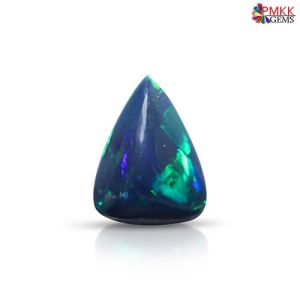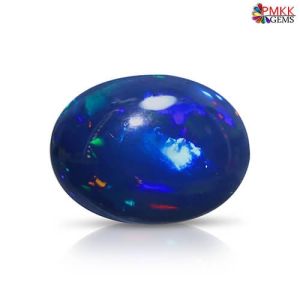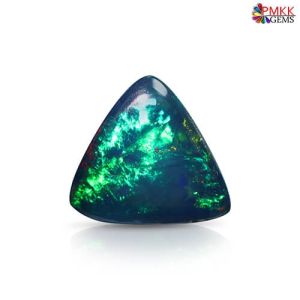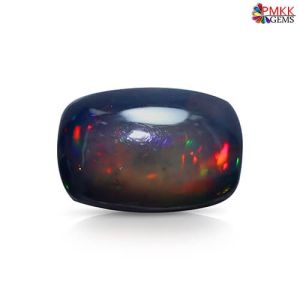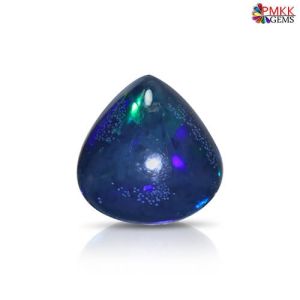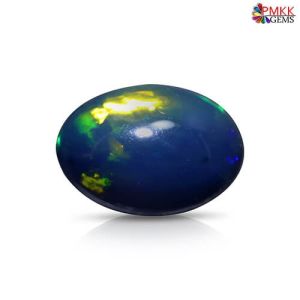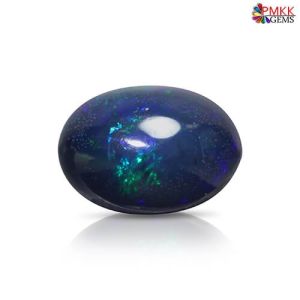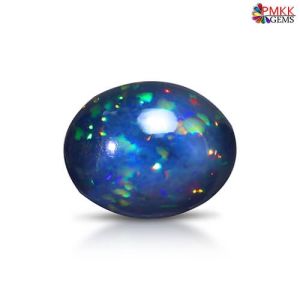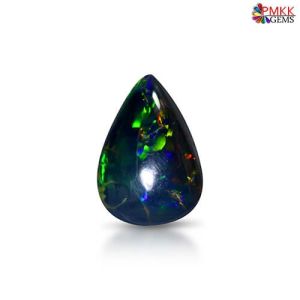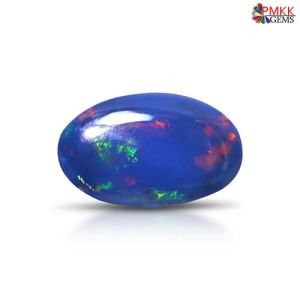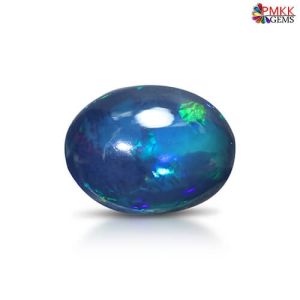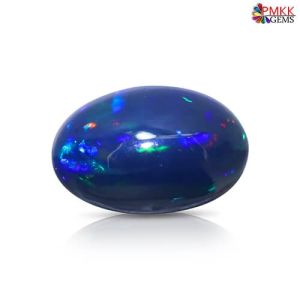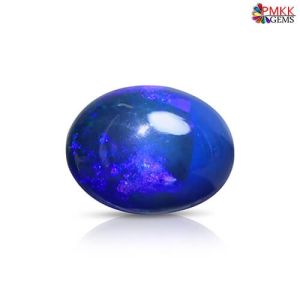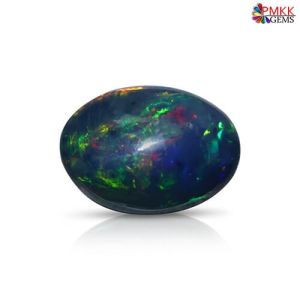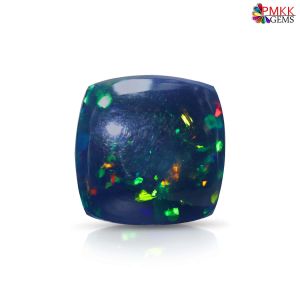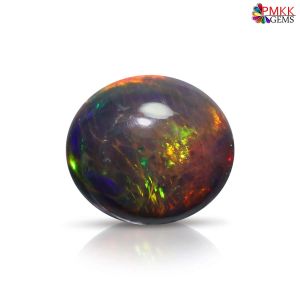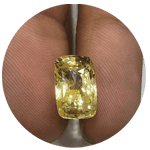Opal Stone (Dudhiya Pathar)
Opal stone, sometimes also referred to as Doodhiya Pathar, is one of the most alluring semi-precious gemstones in existence renowned for exhibiting all colors of a visible spectrum, especially lush white. The word opal is derived from the Greek word ‘Opallus’ which means to witness a change. By Many astrologers and gemologists, opal gemstone is considered an exemplary substitute for diamonds as they are mundane in existence and affordable.
The original opal stone is highly revered for its humongous array of astrological benefits as well as for displaying stunning rainbow colors in its different variants. Opal belongs to the silicate mineral family and encloses one of the highest water percentages in all gemstones, ranging between 5% to 30% by volume. The wonderful and vivacious play of colors in a natural opal stone is called opalescence which distinguishes this gemstone from the rest. Australia and Ethiopia are widely acknowledged for producing some of the finest quality original opal stones in all sizes and colors.
Astrological Benefits Of Opal Stone
Opal gemstone is widely acknowledged not only for its raw beauty but also believed to possessing several benefits and metaphysical properties. According to Vedic astrology, opal stone must be embraced by those who have weak Venus in their horoscope or are bearing the dreadful impact of Venus Planet. Here are some of the commonly associated benefits of opal gemstone.
Emotional Healing: Opal is often considered an exemplary gemstone for emotional healing that can also help in releasing negative emotions, promoting emotional balance, and amping up self-confidence. It is also believed to soothe and calm the mind, easing stress, anxiety, and depression.
Boosting Creativity: Original Opal stone is also strongly linked with enhancing the creativity and inspiration of the wearer. It is believed to stimulate artistic expression and encourage originality and imagination. Opal gemstone is no less than a miracle or boon for artists, writers, and musicians to unlock their creative potential.
Balancing Internal Energies: Only a few individuals know that Opal stone can efficiently balance and align the energies within the body, promoting overall well-being. It is believed to clean the energy Chakras and harmonize the balance between them and stimulate the flow of positive energy. Opal is often used in energy healing and other recreational activities.
Improving Relationship Quality: Opal gemstone is also considered the shining symbol of love and passion. It is believed to strengthen relationships, encourage loyalty, and deepen emotional connections. Opal gemstone is strongly believed to enhance communication and understanding between partners, making it a popular choice for engagement rings and anniversary gifts.
Spiritual Growth: Opal is considered a stone of massive spiritual growth and transformation. It is believed to escalate intuition, spiritual awareness, and other unprecedented psychic abilities. Opal can provide great support in meditation and spiritual practices, helping individuals connect with their higher selves and access spiritual guidance.
Healing Properties: Opal is associated with various physical healing properties. It is believed to support the health of the eyes, improve vision, and alleviate eye-related ailments. Opal is also said to aid in the recovery from illness or injury and enhance overall vitality.
Protection and Luck: Opal has been considered a stone of protection and good luck throughout history. It is believed to ward off negative energies, evil spirits, and bad luck. Opal is often used as a talisman or amulet for protection, especially during travels.
It's important to note that the metaphysical properties and benefits associated with gemstones are based on folklore, cultural beliefs, and subjective experiences. While many people find value in working with opal for its perceived benefits, it's essential to approach these claims with an open mind and personal discretion.
Opal Stone Price
The price of an opal stone can vary greatly depending on several significant factors including the quality, size, color, type, and origin of the opal. Opals are classified into different categories, such as black opal, white opal, crystal opal, boulder opal, and fire opal, each with its own value and price range. Moreover, the natural opal stone price per carat is also affected by the market demand and the type of treatment an original opal stone undergoes to ramp up its appearance.
Based on the combination of all the opal quality factors stated below, on average, Opal stone prices in India for Australian or Ethiopian origins start at 2,000-2,500 INR ($25-$28) per carat and can reach up to 10,000-15,000 INR ($130-$180) per carat, based on factors like size, quality, and color. To get the exact price of the original opal stone, get in touch with PMKK expert gemologists.
Play-of-Color: The play-of-color is one of the most crucial factors when it comes to influencing opal stone prices. Natural Opals with vibrant, intense, and wide-ranging flashes of color are highly sought after and demand higher prices in the market. The play-of-color is influenced by factors like the arrangement and size of the silica spheres within the opal, as well as the quality of the light source. Overall, it’s an intrinsic matter.
Opal Type: Opal is one rare gemstone that comes in various types, including black opal, white opal, crystal opal, boulder opal, and fire opal. Black opals from Lightning Ridge in Australia are considered the most valuable due to their exceptional play-of-color. Boulder opals, which have a thin layer of opal on an ironstone matrix, are also highly prized. Each type has its own price range based on rarity and desirability.
Color and Hue: Opal stones exhibit a wide range of vivid colors, including red, orange, green, blue, purple, and yellow, among others. The rarity and intensity of certain colors in an original opal stone can impact the opal stone price in India to a great extent. For example, red and multicolored opals are generally way more valuable than opals with predominantly green or blue hues. Opals with unique and rare color patterns may command higher prices.
Clarity and Transparency: The clarity of an opal refers to the absence of visible inclusions or internal flaws as opals are opaque to semi-transparent in appearance as well as non-faceted. Opal stones with high clarity and transparency are more valuable than those with visible imperfections. However, certain types of inclusions, like play-of-color patterns within the opal, can enhance its desirability and value.
Size and Carat Weight: Larger opals are relatively rarer than smaller ones, which can influence their price. The carat weight of the opal also plays a role in determining its value. In general, larger opals command higher prices per carat, but exceptional quality and play-of-color can outweigh size considerations.
Origin: The origin of an opal gemstone can significantly affect its price. Australian opals, particularly those from Lightning Ridge, Coober Pedy, and Mintabie, are highly revered and prized for their exceptional vivacious colors and are often priced higher than opals from other regions. Opal stones from Ethiopia and Mexico are also gaining slow and steady recognition in the market.
Treatment: Opals are generally not treated or enhanced, as their natural play-of-color is their most valuable feature. However, some lower-quality opals may undergo treatments such as resin impregnation or sugar treatments to enhance their appearance. Treated opals are generally priced lower than untreated natural opals.
Market Demand and Rarity: Market demand and rarity are significant factors in determining opal prices. Opals that are in high demand or are particularly rare due to their unique characteristics, origin, or limited availability can command higher prices.
Shape and Cut: The shape and cut of opal can influence its price as well. Well-cut and regular-shaped opals that maximize their play-of-color and exhibit desirable shapes, such as ovals, rounds, or free-form cabochons, are generally more sought after and can command higher prices rather than lackluster and irregular-shaped natural opals.
It's important to consider these factors collectively when determining the price of an opal stone, as each factor contributes to its overall value in the market.
Opal Stone Quality
Opal stone quality is assessed lucidly based on several significant factors that determine its overall value and desirability. The exact quality of the original opal stone is determined by the combination of numerous factors. Here are the main factors that contribute to opal stone quality:
Vivid Colors: The vivid colors is by leaps and bounds the most important characteristic of opal and greatly influences its quality. Opals with a vibrant and intense color display are considered high quality. The play-of-color should be visible from different angles and cover a significant portion of the opal's surface.
Clarity: Clarity in opal stone refers to the absence of visible inclusions, cracks, or internal flaws that may affect the stone's durability or vivid hues rather than transparency. High-quality opals are typically free from major inclusions or fractures and have good transparency, allowing light to pass through and enhance the play-of-color.
Pattern and Distribution: Opals may exhibit different patterns, such as pinfire, harlequin, or broad flash, among others. High-quality opals often display well-defined and attractive patterns that enhance their visual appeal. The play-of-color should be evenly distributed across the opal's surface, creating a pleasing and balanced effect.
Cut and Shape: The cut and shape of an opal can also impact its quality to a great extent. Skilled cutting techniques that maximize the play-of-color and preserve the integrity of the stone are highly valued. Opals are often cut into cabochon shapes to showcase their colors and provide a smooth, polished surface.
Size and Carat Weight: Larger opals are generally rarer and command higher prices, however, that’s not the scenario if there is a compromise in play-of-color or luster. Opals of exceptional quality can be highly sought after regardless of their size.
It's important to note that opal quality is subjective to some extent, and personal preferences may vary. However, considering these factors can help evaluate the overall quality and value of an opal stone. It's recommended to consult with reputable gemstone dealers or experts to assess and verify the quality of opals before making a purchase.
How To Wear Opal Stone?
By sticking to standard guidelines, one can wear the original opal stone properly and derive umpteen benefits from it.
Color: Red, black, and white opals are revered and coveted the most, hence, they should be preferred when considering embracing a natural opal stone.
Day & Time: The most exemplary day and time to embrace opal gemstones is Friday from 5 AM to 7 AM with all rituals.
Zodiac: Opal is the birthstone of October month and can be worn by Taurus and Libra Zodiac signs.
Metal: The most preferred metal to embrace opal is silver or platinum. However, natural opal stone can also be worn in white gold.
Worn in: Opal stone benefits can be incurred when it touches the skin of a wearer. It should be worn either as a ring or pendant so that the opal can touch your skin perfectly.
Who Should Wear Opal Gemstone?
Not many individuals know that the original opal stone has a vehement and influential connection with the planet Venus. Therefore, it endows or showers immense benefits to the Zodiac signs that are ruled by Venus or amiable with this planet.
According to Vedic astrology, Libra and Taurus Zodiac signs can embrace opal gemstones only after consulting an experienced astrologer. As there are umpteen size and color variants in an opal stone, therefore, a distinguished astrologer can suggest the right carat weight and color variation.
As per Western astrology, original opal gemstone is recommended to people who are born in the month of October or with the Libra sun sign. Moreover, people with other sun signs such as Capricorn, Aquarius, Gemini, and Virgo can also embrace this enticing gemstone for its beauty and rarity.
Opal Stone jewellery
The opal stone is one of the most precious stones available, and opal stone jewellery offers the chance for people to truly make a statement. There are so many beautiful opal stone rings that can be designed to add a special touch to any look, whether it’s a night out or an everyday one. Opal stones have a way of reflecting light and adding depth, making them a truly unique accessory to any outfit. People who wear opal rings are always sure to stand out from the crowd, with each sparkle leaving others mesmerized. When it comes to opal jewellery, no two pieces are exactly alike - so you’re sure to find something unique and personal.
FAQ
Q1. How are opal stones formed?
Answer: Opal stones are not actually a mineral, but a type of glass. They are formed when water seeps into the crevices of hot rock and then evaporates quickly, leaving behind minerals that form into a glass-like material. The beautiful flashes of color in opal come from the numerous tiny air bubbles that are trapped in the stone.
Q2. How do I care for my opal stone?
Answer: Opal is a delicate stone and should be treated with care. Here are a few tips on how to take care of your opal:
- Don't expose opal to harsh chemicals or solvents.
- Don't clean your opal in ultrasonic cleaners or in an oven.
- Don't use jewelry cleaning solutions on your opal.
- Instead, gently clean your opal with a soft cloth.
Q3. What is the history of opal stones?
Answer: Opal stones have a long and varied history. They have been prized for their beauty and unique optical properties for centuries. The ancient Romans believed that opals were the tears of Jupiter, while Greeks thought they were the manifestation of the gods' laughter. In medieval times, opals were considered to be more valuable than diamonds.
Q4. What are the different colors of opal stones?
Answer: There are many different colors of opal stones, but some of the most common include black, white, blue, green, and pink. Each color has its own unique look and feel.
Q5. What are the benefits of wearing an opal stone?
Answer: There are many purported benefits of wearing an opal stone, including:
- Increased creativity and imagination - Enhanced psychic ability - Better sleep and relaxation - Relief from stress and anxiety - Boost in self-confidence and self-esteem - Increased fertility and reproductive health Also, explore our black opal and dendrite opal.

